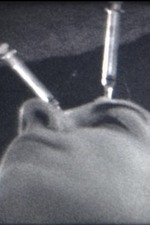
‘In the very consensually driven Québécois film world Cinéma abattoir has the profile of a cultural guerrilla. Far from being a simple poetic formula, this expression is a perfect fit for the actions carried out by Pierre-Luc Vaillancourt over the past years under the Cinéma abattoir label. In fact, he dedicates a good part of his creative energy to developing this editorial platform that allows those who join it, be it just for one evening, to engage in a form of cultural resistance to consumerist society and its practices. Cinéma abattoir, which is an alternative cinema dissemination structure, spreads its actions through the organization of screening evenings and the publication of a DVD collection. For Vaillancourt this is an attempt to inject a convulsive barbarization, or a self-barbarization as Alain Brossat calls it, into the anesthetized social body in order to jolt it with a reviving electroshock; a legitimate autoimmune defence of sorts. To participate in Cinéma abattoir’s various manoeuvres is to practice a certain form of cultural dissidence, to claim to represent an active minority and an inner sanctum of initiates practicing a kind of cult devoted to the radicalism of this deviance.
‘The operational territories of the Cinéma abattoir evenings are rarely that of cinema venues, since Vaillancourt prefers sites that are associated with the dissemination of alternative productions in the visual arts and music milieus (Seke’s Gallery, Saint-Laurent des arts, L’envers, etc.). By proceeding in this manner he re-inscribes the films in the interstices of the underground networks, all the while obstinately reminding profit hungry merchants that film is above all a cultural matter. Taking this first, ideologically charged stance does not, however, imply a complete rejection of traditional cinema distribution circuits, rather it leads one to reflect on the means used to partake in it and what dubious compromises this entails. It’s in this spirit that Cinéma abattoir chose not to make prior arrangements and instead squatted the Montreal NFB cinema on St-Denis Street for one evening to project works offering a diversity of transgressive viewpoints. This tactic of re-appropriating a cultural territory confiscated to serve legitimizing bureaucratic ends, and to occupy it for the time of a screening, is the very example of the kind of cultural trench warfare one should encourage, and that furthermore helps to reinvigorate venues which would otherwise be left to fade away in a stultifying daily grind.
‘Vaillancourt’s other manoeuvres were to be just as destabilizing for cinema or event venue managers willing to collaborate in extreme film projections under the aegis of Cinéma abattoir. At Cinéma du Parc, made available to him after bitter negotiations (the virtues of the potlatch are not evident to all) he refused to limit his guests’ interventions to the room and occupied the entrance hall, with the goal of pointing out that the difference does not only reside in the content but also in the form and means of film dissemination. The same concern to deconstruct the screening space also guided the Amour et terrorisme evening held in the context of the Festival du nouveau cinéma, as well as the presentation of a performance by Karl Lemieux assisted by Philippe Léonard. An event that consisted of a visual and audio exploration no longer simply limited to the screen, since it spread out into the Hydro-Québec agora space before continuing with a plastic-cinematographic intervention which totally diverted the screen as a support by choosing to use a prepared wall in its stead.
‘The Cinéma abattoir evenings are not solely limited to a questioning of the sites and apparatuses of film projection, they are above all an occasion to see works that are a cut above the pre-cooked fare of bland films one usually finds on the menu of Québécois cinemas. One need only take a look (however quick) at the films by the French director Catherine Corringer or the American Usama Alshaibi to see just how much fascinating aesthetic experimentation takes place in the world of transgressive cinema. Through intelligently and sensitively developed programs gathering some of the most important names of underground experimental and transgressive cinema (Aryan Kaganof, Dyonisos Andronis, Breyer P-Orridge, Ben Russel, Ken Jacobs, to name a few), Vaillancourt seeks to stimulate the collective imaginary by feeding something other than the rawboned junk served up by the goodtime mongering cultural industries. How can one not be delighted by retrospectives dedicated to the Belgian director Roland Lethem, whose delicious Comme le temps paxe vite is hard to equal, or the American JX William, these veritable little cluster bombs intended to shake us up in our vapid routines? How to communicate one’s surprise upon discovering a double-bill including Graphyty (1969) by Jean-Pierre Bouyxou and Chant sauvage : le Ménestrel (2007) by Chaab Mahmoud, two works which are diametrically opposed on a formal level, but united, beyond time, by an analogous subversive approach?
‘Vaillancourt also deploys his offensive forces by enlisting singular Québécois works such as The Man We Want to Anger. Kenneth Anger, Aleister Crowley, Cinema, Magick and the Occult by CA CA CA, a documentary that is aesthetically on par with the works of the artists that are the film’s subject, or the stimulating works by Étienne O’Leary’s, a remarkable filmmaker from the 1970s whose films are too rarely presented and which had become invisible before this memorable evening last July 5th. Needless to say there is the succession of local filmmakers (Karl Lemieux, Pat Tremblay, Serge de Cotret, Frédérick Maheux, Mitch Davis, Philippe Léonard, etc.) who were given an opportunity to reach an audience by way of the cinematographic shrapnel that the Cinéma abattoir programs represent.
‘Vaillancourt’s endeavours to spearhead underground attacks have led him to spread the offensive beyond the Québécois territory by organizing programs that are polar opposites of the efforts undertaken by the Québécois and Canadian governments to internationally promote a professional and mature image of our film industry, while all too often abandoning any semblance of originality. In this regard, the European expedition under the code name Hérétiques : cinémas iconoclastes québécois, which did not go unnoticed as it passed through Kiel, Lübeck, Hamburg, Paris, Lausanne, Nantes, Berlin, Krakow and Amsterdam, was truly a last-ditch struggle. A real sabotage operation of this vain commercial promotion, this tour at times really began to look like guerrilla warfare.
‘Vaillancourt’s ultimate affront to the snug Québécois film milieu is the micropublishing of DVDs that benefit from two commercially non-viable elements: an anthology of short films and an aesthetics that’s light years from classic narrative cinema. With three titles L’érotisme, Incarnation and À rebours, he has thus managed to carve out a special place for himself as part of the transgressive cinema enclave, rallying both experimental film buffs and extreme cinema enthusiasts around the same banner. Here too, the choice of works is incredibly pertinent and the cohesiveness of title groupings demonstrates a real concern to display each work in its proper context. Furthermore, in deciding to forego the official sanctioning bodies, such as the Régie du cinéma du Québec, by no longer submitting his DVDs to the organization’s henchmen so that they can emit a rating certificate and small stickers clearing it for commercial distribution in Québec, Cinéma abattoir has taken its fight to another terrain. In choosing to bypass the system and to go underground with internet sales, he is internationalizing his struggle (his buyers live in various European and Asian countries, while others are holding the fort in some video stores in France, Greece, Holland, Finland and the US by making it a point of honour to distribute these DVDs) and showing all those interested that our home-grown cinema will always be welcome abroad so long as one does not fiddle with its distinct flavours and aromas—between a whiff of holiness and Mephistophelean exhalations.’ — Pierre Rannou
____
Stills
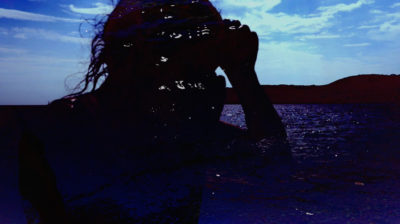
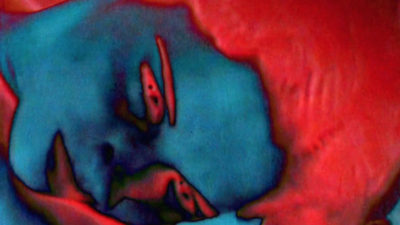


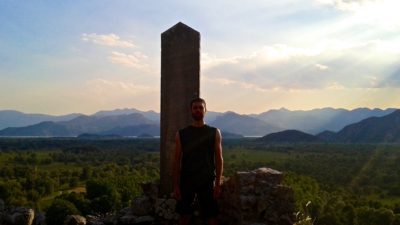
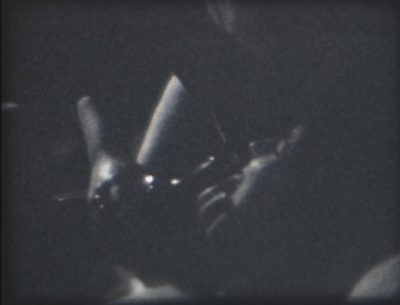
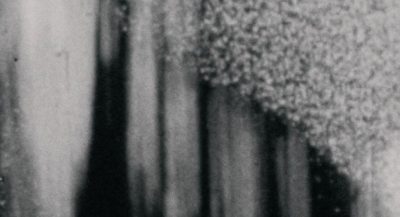
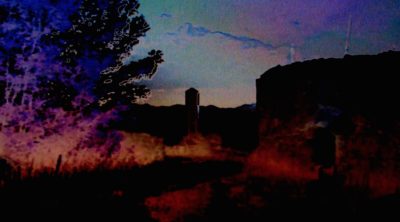
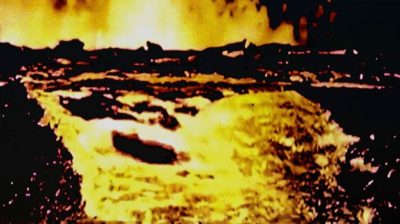
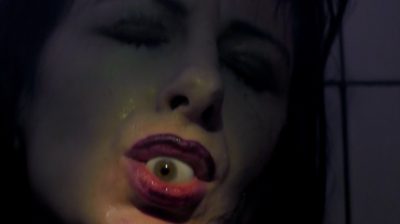

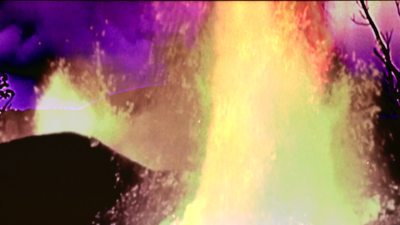
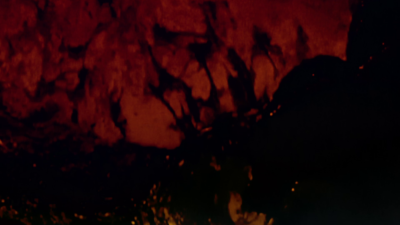
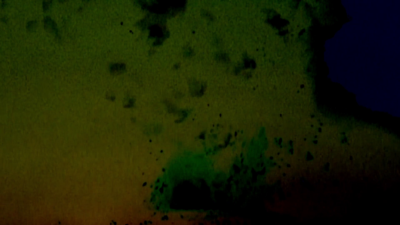
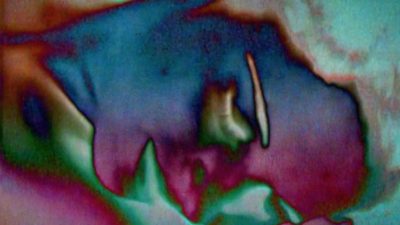
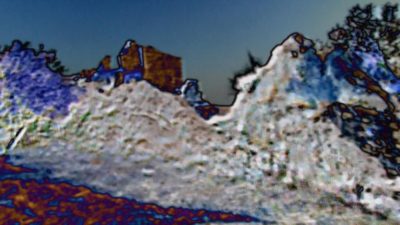

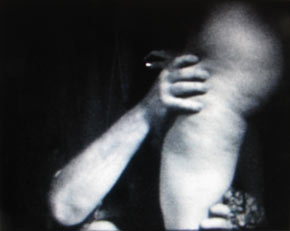
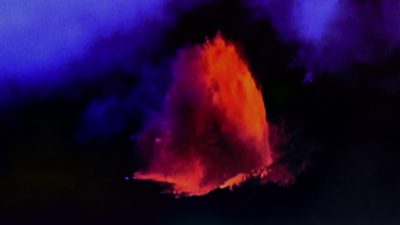
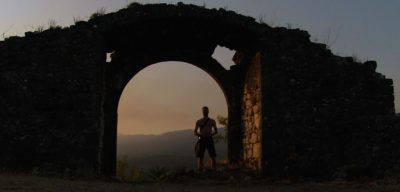
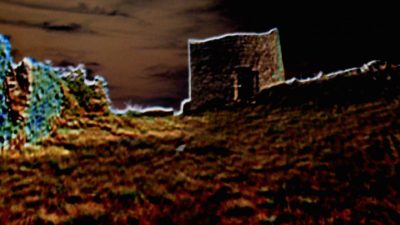
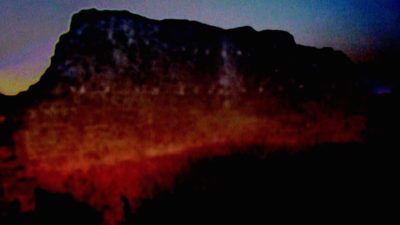
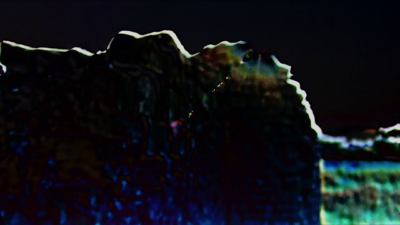
____
Further
Pierre-Luc Vaillancourt @ IMDb
P-LV @ Vimeo
P-LV @ Facebook
P-LV @ MUBI
P-LV @ Experimental Cinema
P-LV’s films @ Collectif Jeune Cinema
HIGH VOLTAGE FILMS OF PIERRE-LUC VAILLANCOURT
PL-V @ Underground Film Journal
SUR/IMPRESSIONS : O’LEARY, CLEMENTI, BOUYXOU
PÉLERINAGE DANS LES SOUTERRAINS AVEC JEAN-PIERRE BOUYXOU
Projekcija: Pierre-Luc Vaillancourt – Retrospektiva (2011-2018)
_____
Extras
FILM and MUSIC Festival curated by Pierre-Luc Vaillancourt & Júlio Mendes Rodrigo
room rent: Steve Pavlovsky, Pierre-Luc Vaillancourt
____
Interview
in French
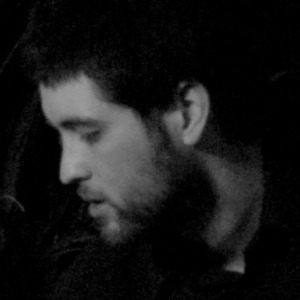
Hors Champ (HC) : Qu’évoque pour vous le travail sonore et l’imagerie des films de Grandrieux ?
Pierre-Luc Vaillancourt (PLV) : Évidemment, les filiations sonores avec « Étant Donnés » ravivent les images des films des frères Hurtado, qui par de nombreux éléments recoupent le cinéma de Grandrieux. Les archétypes, la nature, l’ivresse et une fébrilité des corps. Malgré les technologies différentes, leur cinéma se rejoint sur de nombreuses pistes. Les films de Marc Hurtado penchent vers un travail holistique, alors que Grandrieux les imbrique dans l’interstice d’un travail externe, projeté sur des acteurs, sur des écrans.
HC : Quel rapport entretenez-vous avec son cinéma ?
PLV : La transe du cinéma expérimental est souvent chaleureuse, ou possessive, ce qui prescrit un état passif et une pose de soumission chez le spectateur. Elle me semble encore plus accentuée lorsqu’elle est imbriquée dans le cadre d’une pratique narrative ou figurative. De ce que j’en ai vu, le cinéma de Grandrieux agit dans une dislocation lucide qui s’emboite au plus que réel ; il utilise donc la transe pour « tuer le pantin ». Ce qui me plait.
HC : Comment replaceriez-vous le cinéma de Grandrieux dans la cartographie du cinéma XP ?
PLV : Les films de Grandrieux me semblent beaucoup trop combatifs pour se contraindre à la cartographie expérimentale, celle-ci étant arquée vers un fétichisme de la nostalgie, alors que ceux de Grandrieux sont posés vers l’avant, vers le renouveau de la naissance. Certains de ses films ont certainement des préoccupations similaires à la position laboratoire de l’expérimental, dans leur minutie, leur rigueur et leur précision. Pourtant les films de Grandrieux me semblent se poser beaucoup plus du côté sauvage et animal du cinéma d’Andy Milligan ou d’Alberto Cavallone par exemple.
HC : Quel film ou séquence de film vous a marqué le plus et de quelles manières ?
PLV : Certainement Il se peut que la beauté ait renforcé notre résolution – Masao Adachi. Le plaisir, la souffrance, ça y est.
_____
Responses
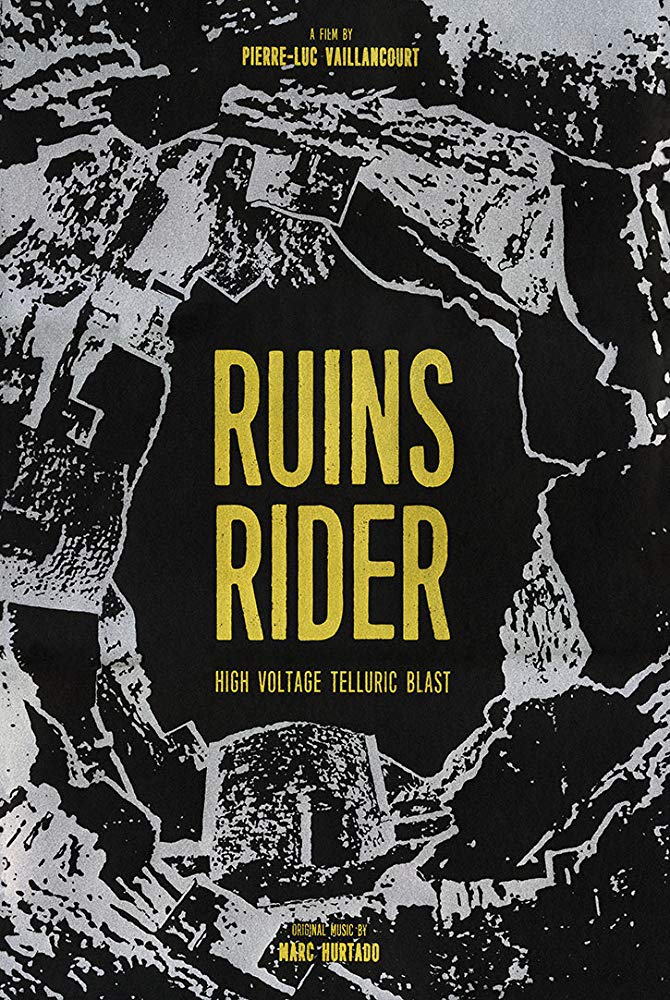
‘the way this film uses landscapes as simultaneous sites of physiological & ontopological exploration is absolutely stunning. Vaillancourt’s technique precludes the use of the Balkan ruins for specific historiographic purposes, gesturing instead to the ruin itself as a locus of collective mythology, a literalization of decay, of the structures of a civilization collapsing under their own weight. though these ruins are in the Balkans, their representation onscreen has absolutely nothing to do with a particular geography; these are not ruins of place, but of experience. the utterly alien experience of traversing an impossible terrain, outside of time and outside of psychology. the way Vaillancourt’s camera moves between stasis and delirious motion—often obscuring any clear distinction between the two through varying flicker effects—establishes its use as something beyond an “extension of the body,” as it becomes a separate body entirely, unbound from the earth.
‘also, more than necessary to mention how essential Hurtado’s score/sound design is for creating the atmosphere of the piece as a whole. there were a few moments where the tension from his audio builds to such a pummeling crescendo that Vaillancourt’s already-entrancing images become truly disquieting, especially in the sequence leading up to the darkened entrance of one of the structures—being literally, terrifyingly, and unwittingly coaxed into the void, waiting for something to inevitably come out from the other side.
‘very few films are so wholly in-tune with my own cinematic interests as this, and good god what a fucking thrill it is to see.’ — connor
*
‘still not huge on landscape films but this is obviously a somewhat different beast’ — erik reeds
*
‘this is a special one. i definitely had some gysin dream machine-esque experiences in parts… basically this is a film where you the viewer are made to wander about/surveil areas as if youve been cast in a crumbling/broken/slo-mo first person RPG. the hurtado score is totally excellent and a crucial component in how well the film works (it kinda reminds me of mika vainio). v v good, this.’ — 𝕒 𝕗 𝕔
*
‘This might be the most transportive piece of cinema I’ve ever seen? About 15 minutes in, I could feel my brain pulsing, and, after another 5 minutes, I felt as if what I was viewing was 3D—as if I could reach into the phantasm-space leaking out of the frame. I actually had to look away and even close my eyes a couple of times just to make it through this. When the screen finally went black and the sound slowly died down, a wave of relief washed over me.
‘We leave impressions on places and they leave impressions on us… and sometimes a camera can capture such impressions. This is perhaps central to most landscape films, but I reallyyyy felt it here. Though landscape is probably the wrong word to use; this world is far too digital—an index of an index of a place that once was.
‘My eyes and ears are still ringing.’ — $AM
*
‘Disrupting the physical space and abstracting it into desiderium. A rupture has appeared between images, allowing us to view into an alternative reality. Shattering the actual until our perception is altered.’ — nnmore
*
‘landscapes revelling even in ruin; revealing only in ruin’ — tarrabella
*
‘Landscapes reduced to atoms, or rather saying, pixels. The manipulation of the digital images is so breathtaking, The images seem to be broken and reconstructed at all time, an anarchic film that may be compared only to watching the clouds. Beautiful.’ — Bruno Pires
*
‘I feel like of everything I’ve seen that approaches it, this film demonstrates, above all else, how you make a digital flicker film well in to the second decade of the 21st century.
‘While some would argue that 45 minutes is too long for something like this, I’d argue the opposite, insisting that duration is necessary in order to allow yourself to be full encompassed by the work. The aggressive nature of the technique, once you find yourself “inside” of it, becomes more meditative and reflective, and the nature of the film becomes more about the experience of looking in a new way than any sort of penetrative ocular violence. There are times when you feel like you’re moving without actually moving, and while trying to pay attention the eyes play tricks and, without any sense of awareness, you find yourself further along the landscape than expected.
‘The catch herein, of course, is that this is indeed a landscape film at its most base level; the landscape is one of the ancient ruins of Montenegro. The image always refuses a pastoral approach to said landscape though; the history of ruin is a history of violence and erosion, ultimately the earth wearing down all that has been built by man, and the image here reflects that: there is no perfect visual acuity, you are not truly permitted to just look at these ruins, rather, as the title implies, one can only ride them. This posits the landscape as “landscape as limit experience”; a cinematic ride through the calm nightmare of entropy.
‘Those will light sensitivity or photo-epilepsy should, as is the case with most flicker films, stay far, far away from this, as the only violence that occurs on screen is a physical violence against the eye, elevated organ of sight, as the flicker varies in intensity, and at every moment you are allowed to sink into the contemplative quiver of dimmed beauty a white takes over the frame and pushes you back into yourself, reminding you not to lose track of what it is you are doing, which is sitting in the dark watching a film.
‘When I received the film from Vaillancourt sent me the film he included a note: It is highly recommended to view in good AV conditions, pitch black environment and high-powered sound system. To an extent I always understand the frustration in being told how to watch a movie, but for a film like this the darkness, the capacity to be enveloped in the sound, is really necessary to aid in a total subsumption into experience.
‘Another note to add is to speak to the success of Marc Hurtado’s soundtrack; a month or so ago I had watched Vaillancourt’s much shorter film, Hypnagogia, which uses the same “technique” found herein. That film seems far less successful to me, both for the fact that it’s duration prevents one from totally becoming absorbed into the experience and the music used, while very interesting in its own, dominates the image and makes the film seem like more of a music video than an experience, whereas the stylings of Hurtado’s sound-work is much more suited to the experience of the film: low buzzes, the sounds of a body, mechanistic thumps–complementing instead of dominating.
‘While it’s certainly not for every one (in many ways it’s a film that asks a lot of its viewers), it’s a perfect example of exactly what I want cinema to do, and so for me it’s an immensely rewarding and worthwhile film.’ — M Kitchell
____________
6 of Pierre-Luc Vaillancourt’s 10 films
____________
Force Vitale (2018)
‘Featuring elite fighters Anastazija Petrovic and Biljana Mitrovic, Force Vitale is a kinetic experience of martial arts. Dynamism, energy and intensity.’ — IMDb
the entirety
_____________
HYPNAGOGIA (2017)
‘Marked by an intense hypnotic dimension, HYPNAGOGIA amplifies geophysical forces and propels telluric powers. The experience is an ontological fire, a cerebral blast of volcanic sensuality.’ — Synaesthesia
Trailer
the entirety
_____________
Ruins Rider (2017)
‘Shot in the Balkan wilderness, an exploration of mysterious ruins that over the centuries have been known to trigger trances. A visceral experience composed of hypnagogic visions and raw energy.’ — letterboxd
Trailer
_____________
Autopsy Lights (2015)
‘Autopsy Lights est une odyssée hypno-érotique où se déploie une transe profondément cérébrale et viscérale. Le caractère provisoire de la réalité est intensifié, percé et traversé. Le corps est la lumière embrasée par les astres dévoilés.’ — senscritique
Partial trailer
______________
La Nuit Obscure (2011)
‘Whipped by the death of her lover, a woman journey through a night of excess.‘ — trakt

______________
Broken Flesh Ecstasy (2005)
‘The prey becomes the predator on a quest for murder-fuelled orgasm.’ — IMDb
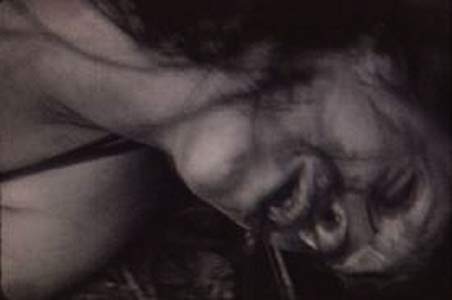
*
p.s. Hey. ** Bill, Hi. Yeah, I’m not surprised, I guess. And same here, true. The news gives the impression that Paris is like the beach at Normandy with buildings, but it’s itself with noisy patches here and there. Well, and a dead metro system. It’s interesting to watch the Hong Kong news partly because when Zac and I were there, we stayed right where the main protest action happens, so I know those streets and can trip out on the difference. I believe I’ve read maybe a single piece or two by Christian TeBordo here and there, but I think that’s it. I didn’t know about his book. I’ll try to get it. Big thanks. ** David Ehrenstein, Hi. Oh, I wasn’t thinking of you when I wrote that about Malick. I respect your tastes, obviously, and things only speak to whom they speak and all of that. And the new Malick is not a perfect film by any means, but I think the genius in it outstrips the great majority of what else is being made in the name of film these days. There’s this prevalent knee-jerk rejection of recent Malick going on that seems to me to have almost nothing to do with the films’ quality and mostly to do with a depressing discomfort with approaching film as a way to journey uniquely, especially when a film is ambitious and problematic thereby. It’s the same with the majority taste in books and music and so on these days. It depresses me that, say, a film that’s basically just a shittily written, fashion magazine chic looking graphic design exercise like ‘The Lighthouse’ is seen as some kind of cinematic furthest extent by a lot of people. Blah blah, anyway, the current state of serious film’s reception is a bee in my bonnet. ** Steve Erickson, Okay, I’ll wait for your related piece and then decide if the book is worth treasure hunting. ** Paul Curran, Hi, Paul! I’m with you on ‘TSF’, and I bizarrely haven’t listened to ‘PC’ yet, but will. No, it’s really fantastic news that ‘Left Hand’ will be alive again, and a British edition can get anywhere, so that’s just great! CCM has gone so quiet in the last year or so. I wonder what happened. It was such a powerhouse of exciting books for a while. Yes, please get moving on your new one. And news on Z & me in Japan as soon as there is any. Happy Friday. ** Right. I’m guessing most of you won’t have heard of the really excellent young French-Canadian filmmaker Pierre-Luc Vaillancourt much less have seen his films, but here’s your chance to kill both birds. Hope you’ll take it. See you tomorrow.




 Now available in North America
Now available in North America 
Vaillancourt might best be described as “The Love-Child That Isidore Isou Tried To Hide”
Malick has gone his own way for so long he makes Kubrick look “Mainstream.” I adore “Days of Heaven” and quite like “The Thin Red Line” remake — which appeared after a lengthy and mysterious absence from the scne. “The Tree of Life” is pretty wonderful. The films he’s made since are spotty. He’s always worth seeing. At heart what bothers my about “A Hidden Life” is the way he sticks to wide-angle lens medium close-ups throughout. They make the film inert, IMO
It’s Oscar Levant”s 109th birthday
Jerry Herman died at 88. None of the obits I’ve read so far have mentioned he was a longtime HIV survivor.
I spoke too soon Here’s an obit that goes into Jerry Herman’s HIV status and AIDS work
Hi Dennis – looking to get in touch about a project I’m organizing in celebration of Hudson. Where can I send you the details? happy new year, Ian
Dennis, So I realized today that I didn’t get myself anything for Christmas! Yikes. I usually do a big Amazon order around this time. I’m going to wait a bit, though. LPS’s birthday is Monday, and we’ll be taking him out to dinner (read: I’ll be paying for everyone), so I’m going to give myself a little bit of no-spending time before I make an order. Jesus’ Son will be on the list. Well, unless I go to that Books-A-Million and it’s there used for cheap. Shit, I should go there this weekend and have a look around.
Sypha posted something in our FB chat group that Caitlin R. Kiernan posted, and it was pretty funny. She went to a Books-A-Million where she lives, it’s the only bookstore there now, and couldn’t find Look Homeward, Angel. But she found tons of toys and plushes and movie tie-in shit. Kind of funny.
Thanks, yeah, we had a good time. Little Women was good. A little too long…I would’ve cut it by half an hour of shit that was unnecessary (imo), but it was good. Timmy C. was great. Finally got himself another role that the director allowed him to create and adapt himself with all his goofiness.
Then we went to my friends’ place for some food and some jamming. Kayla and I played with their kids and the rest of them played -guitar, drums, piano- and sang (my one friend who’s an excellent singer). A good time. Of course, I just embarrassed myself and everyone else with my silliness, but I guess that’s par for the course these days.
So I’m looking to try and be even more positive in the new year. I think it’ll be a good year.
I’m glad the Buche was a hit. Tear that fucker up!
Oh, yeah, if you restore that day, my friend would be honored. He’s read Try and really liked it. What I like most is that he “got it.” He’s a smart fella, though, so it shouldn’t surprise me.
Cool ! Roland S Howard day, yesterday! Makes up for my Autoluminescent dvd that didnt make it into my luggage.. looking foward to snuggle up with the post soon.
No great surprise that I’d never heard of Pierre-Luc Vaillancourt but I like the look of his films, and I’m into the idea of his Cinema abattoir events. He sure does make some interesting points about film distribution.
This evening I sat down with the family to watch The Sisters Brothers, the film adaptation of the novel by former DL Patrick deWitt. I think the film loses some of the humour and complexity of the novel but still, it’s full of notable performances and an epic feast of Old West landscape for the eyes.
NOW READ THIS! <A HREF="http://vagabondscholar.blogspot.com/2019/12/jon-swift-roundup-2019.html" The 2019 Round-Up inks Galore to political blogs (including mine) dealing with the muck of Trump.
Sue Lyon R.I.P.
Hi Dennis-
I’m with Bridge Eight Press, the publisher of Christian TeBordo’s new book Ghost Engine. We’d love to send you a copy on behalf of Christian.
If you’re interested, could you send an email to editor@bridgeeight.com with the best mailing address?
Thanks,
Caleb Sarvis